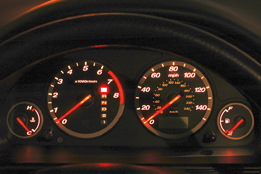Lesson 4
1. Lesson 4
1.1. Discover
Module 6: Measurement
Discover

iStockphoto/Thinkstock
In previous lessons you learned about accuracy, precision, and tolerances in measurements. You learned that different situations require greater accuracy and precision than others. In this lesson you are going to apply what you learned to a variety of scenarios.
Try This 1
- The instrument panel on a vehicle’s dashboard provides several measurements that are important to the running of the vehicle. Complete the following table using measurements from a typical vehicle’s instrument panel.
Measurement
How can you estimate or determine the value?
Type of measurement
How important is it to know this measurement?
fuel
fuel gauge
volume
very important
- Using the measurements from question 1, complete the following chart. Part of the chart is completed as an example.
Measurement
Reason
Accuracy

least accurate
most accurate
Precision

least precise
most precise
odometer
• usually shown accurate to 0.1 km
Uncertainty

lowest uncertainty
odometer
• usually shown accurate to 0.1 km greatest uncertainty
Tolerance

lowest tolerance
greatest tolerance
![]() Save your responses in your course folder.
Save your responses in your course folder.
Share 1
With a partner or in a group, consider your answers to Try This 1 and answer the following questions.
- Did all of you think the same measures were important? Explain.
- Were your rankings of accuracy, precision, uncertainty, and tolerance similar? Explain.
- Are the most important measurements always the most accurate and precise? Explain.
![]() If required, place a summary of your discussion in your course folder.
If required, place a summary of your discussion in your course folder.